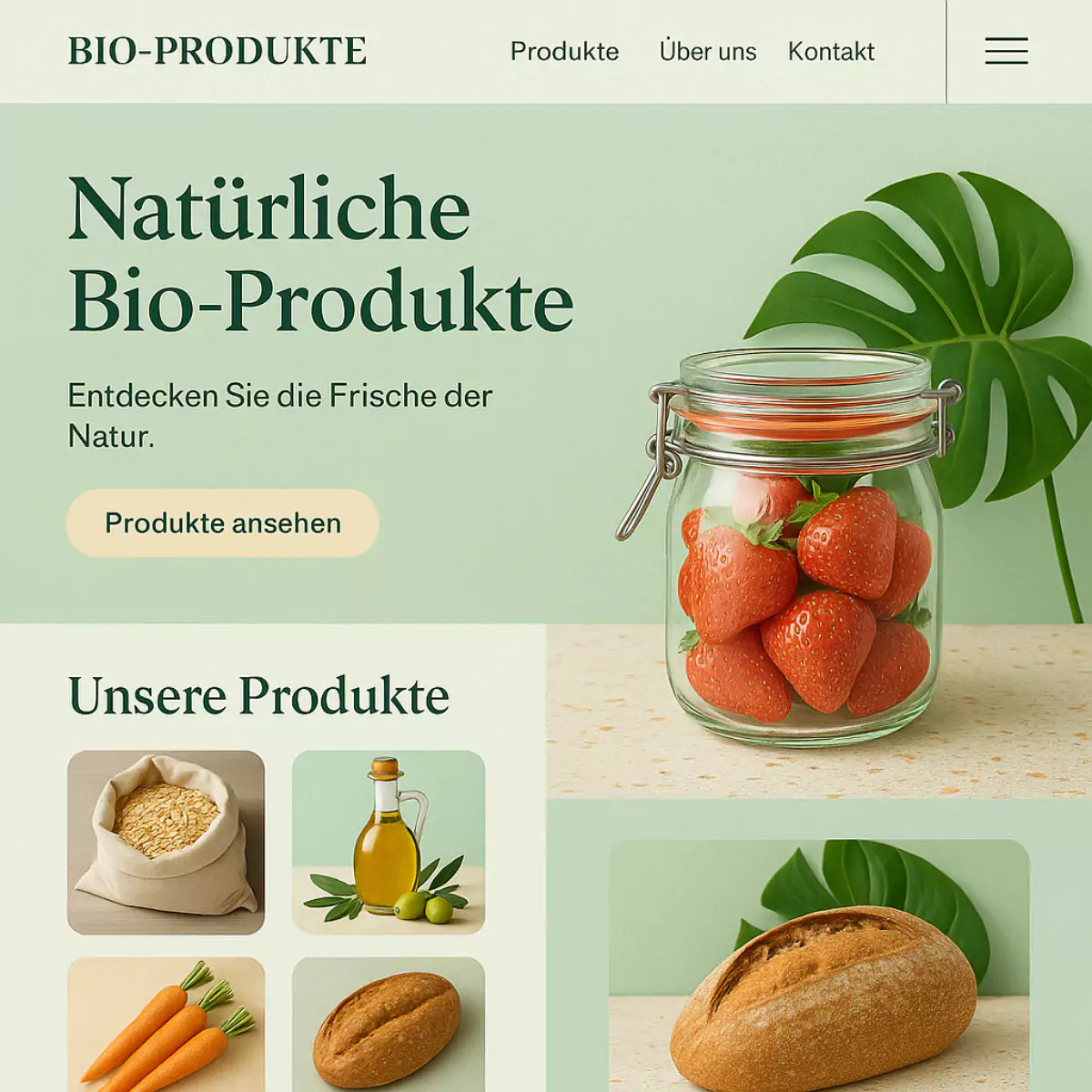German UX Content
Precision and Clarity for Digital Interfaces
As digital environments grow more complex, user experience content is becoming a decisive factor for success. A structured approach to German UX content helps make digital products more intuitive and accessible by aligning language with usability principles. This ensures clear communication that strengthens both user engagement and overall product experience.

What is German UX Content?
German UX content combines linguistic precision and usability principles to create intuitive digital experiences for German-speaking audiences. It focuses on adapting interface language to local expectations, ensuring that interactions feel seamless, natural, and user-centered. Each element contributes to making communication more efficient, accessible, and culturally appropriate.
Key aspects include:
Clear and concise wording: Texts are adapted to German reading habits to improve clarity and interaction speed.
Culturally sensitive phrasing: Language reflects local norms to create familiarity and strengthen user trust.
Consistent terminology: Standardized wording across all interfaces supports navigation and reduces cognitive load.
Alignment with UX design standards: Content and design work together to enhance usability and user flow.
Tone-of-voice adaptation: Brand voice is preserved while authentically translated for German-speaking audiences.
Each of these aspects ensures that UX content feels natural and supports user behavior intuitively. By addressing linguistic habits, cultural expectations, and interaction design simultaneously, German UX content creates a seamless digital experience. The result is communication that feels effortless, coherent, and precisely targeted.

German UX Content: Key Benefits
Good UX content becomes visible where it simplifies interactions and creates clarity for users. It supports intuitive navigation, strengthens user trust, and helps digital products communicate effectively. A targeted approach to German UX content brings together language, design, and user behavior into one consistent experience.
The main advantages are:
Efficiency: Content is structured to guide users quickly and naturally through interfaces, minimizing friction and enhancing navigation speed.
Scalability: UX content maintains consistency across different products, platforms, and languages, enabling seamless growth and localization.
Quality: Linguistic precision and cultural adaptation ensure that every text element supports clarity, professionalism, and usability.
User-centeredness: Content is designed to meet the real expectations and needs of German-speaking audiences, fostering trust and satisfaction.
Competitive advantage: Strong, localized UX writing differentiates products in the market and directly supports better engagement and conversion rates.
Each of these benefits contributes to a user experience that feels natural, efficient, and trustworthy. By connecting usability principles with cultural adaptation, German UX content creates lasting value across digital touchpoints. The result is a communication strategy that strengthens interaction quality while supporting business objectives.

German UX Content: Service Overview
German UX content services cover all essential areas needed to create clear, user-friendly digital experiences for German-speaking audiences. Every component focuses on ensuring that language, structure, and design work together to support intuitive navigation and effective communication. The result is a comprehensive solution that addresses both linguistic precision and usability requirements.
Focus areas of service:
UX Copywriting for Interfaces: Labels, menus, buttons, and system messages are crafted to guide users efficiently and naturally through digital products.
Microcopy Development: Short texts such as hints, tooltips, and onboarding instructions are created to support users exactly where they need assistance.
Tone-of-Voice Adaptation: Brand identity is preserved while the communication style is adjusted to meet the expectations of German-speaking audiences.
Content Review and Optimization: Existing UX texts are analyzed and refined to improve clarity, consistency, and user-friendliness across platforms.
Terminology and Style Guide Creation: Clear guidelines ensure consistent language use, tone, and style across all user touchpoints.
Each service element contributes to making user interactions smoother, clearer, and more engaging. By combining strategic writing expertise with cultural adaptation, German UX content supports both user satisfaction and product success. The result is a cohesive, high-quality user experience that resonates with German-speaking audiences.

German UX Content: Typical Project Scenarios
Real-world examples show how German UX content adapts flexibly to different product requirements, industries, and user expectations. They demonstrate how strategically developed content improves navigation, engagement, and user satisfaction across a wide range of applications. Each scenario highlights the practical value of targeted UX writing for German-speaking audiences.
Common project scenarios cover:
Localization of English UX Copy: Existing interface texts are adapted to German language structures and cultural expectations while maintaining usability.
German UX Content for SaaS Platforms: User flows, onboarding sequences, and contextual help elements are created or refined to improve customer retention and engagement.
Website Relaunch Projects: Navigation structures, action prompts, and microcopy are optimized to better meet the needs of German users.
Microcopy Development for E-Commerce: Product filters, checkout processes, and customer communication texts are tailored to ensure a seamless online shopping experience.
Voice Adaptation for Chatbots: Dialogue scripts are localized and linguistically optimized to create natural, culturally appropriate user interactions.
These examples illustrate how German UX content can be tailored to different digital products and industries. They show how thoughtful content creation improves user experience, enhances communication flow, and supports business objectives. The result is a strategic integration of language and interaction that delivers measurable value.

German UX Content: Industry Focus
Each industry has specific expectations regarding language, structure, and interaction patterns that shape user experience. German UX content adapts communication precisely to these sector-specific needs, ensuring clarity, relevance, and intuitive usability across all applications. This approach guarantees that every interaction feels natural, purposeful, and aligned with user expectations.
Application areas highlight:
Technology and Software Development: SaaS platforms, mobile applications, and digital tools are localized to match German user habits and interface expectations.
E-Commerce and Online Retail: Product descriptions, filters, and checkout processes are adapted to optimize user journeys and encourage seamless transactions.
Financial Services: Banking apps, insurance platforms, and fintech solutions are tailored to meet regulatory standards and user expectations in Germany.
Healthcare and Medical Technology: Patient portals, health apps, and digital communication tools are refined for clarity, trust, and accessibility.
Energy and Sustainability: Smart energy applications and environmental platforms are localized to convey technical information accurately and accessibly.
Each sector-specific adaptation supports better usability, stronger user trust, and higher engagement. By addressing the distinct needs of different industries, German UX content ensures relevance, credibility, and functional precision. The result is communication that fully resonates within its target market and supports sector-specific goals.

German UX Content: Workflow Overview
A structured workflow provides clarity, security, and consistency throughout the development of German UX content. Each step follows a clearly defined purpose, ensuring that quality, usability, and cultural relevance are maintained at every stage. This approach keeps processes transparent and manageable, even for complex digital environments.
Key workflow steps feature:
Analysis: Existing materials, user journeys, and interface texts are reviewed to identify optimization opportunities and specific adaptation needs.
Implementation: UX content is created, localized, and aligned with both design standards and user expectations.
Review: Linguistic, functional, and usability aspects are tested to ensure that all content elements meet quality and clarity standards.
Finalization: Content is prepared for seamless integration into digital products, respecting technical requirements and design structures.
Optional Monitoring: Performance data and user feedback are used to continuously optimize UX texts and improve interaction quality.
Each workflow step contributes to a clear and efficient project process that supports quality and usability. Early identification of potential issues ensures smooth implementation and minimizes corrections later on. The result is a structured, reliable, and user-focused content development process.

German UX Content: Tools & Technologies
Modern tools and technologies are essential for creating consistent, precise, and scalable German UX content. They support every phase of the content development process, ensuring that linguistic quality and usability standards are reliably maintained. Seamless integration with design and development workflows further enhances the overall efficiency and impact of the final product.
Key technologies are:
Figma: Enables the direct integration of UX content into design prototypes and supports collaborative editing with design and development teams.
Content Management Systems (CMS): Facilitate the structured deployment and maintenance of UX content across different digital platforms.
Terminology Management Tools: Ensure consistent use of language, style, and brand-specific terminology throughout all user interfaces.
UX Writing Plugins: Allow real-time testing of microcopy and interface texts during the design phase, improving usability from the start.
Translation Management Systems (optional): Support multilingual content workflows by integrating German UX content with global localization strategies.
Using the right tools ensures that UX content development remains transparent, efficient, and high-quality. Integration with common design and development environments supports smooth workflows and faster implementation. The result is a streamlined, reliable process that strengthens both usability and user satisfaction.

German UX content combines linguistic expertise, cultural adaptation, and usability principles into one coherent solution. It creates digital experiences that are intuitive, accessible, and tailored precisely to the expectations of German-speaking users. The result is a sustainable content strategy that strengthens usability, enhances communication quality, and supports long-term product success.
Learn more about my specialized content and design services in German, feel free to reach out.